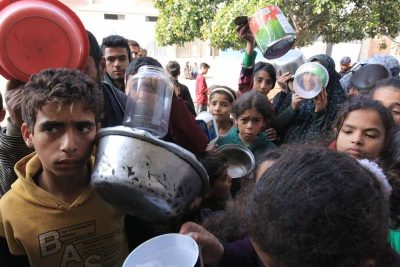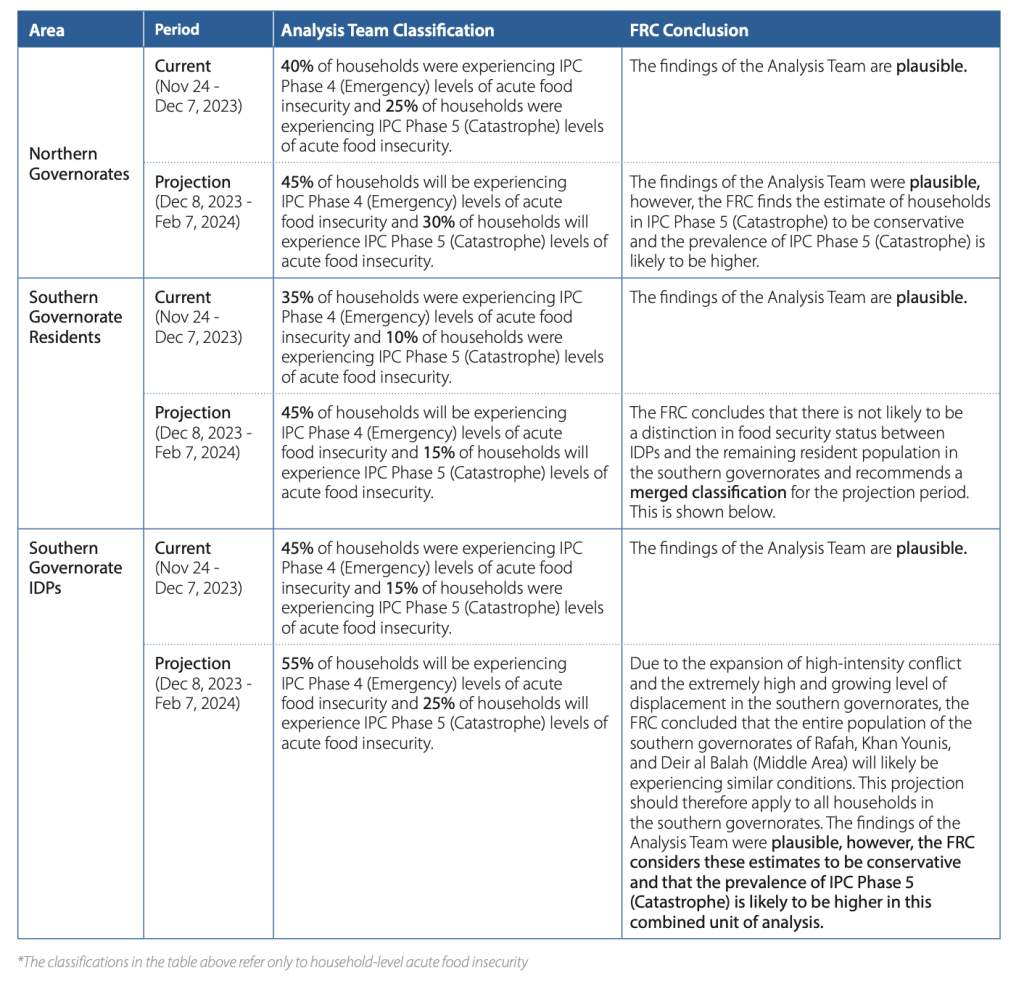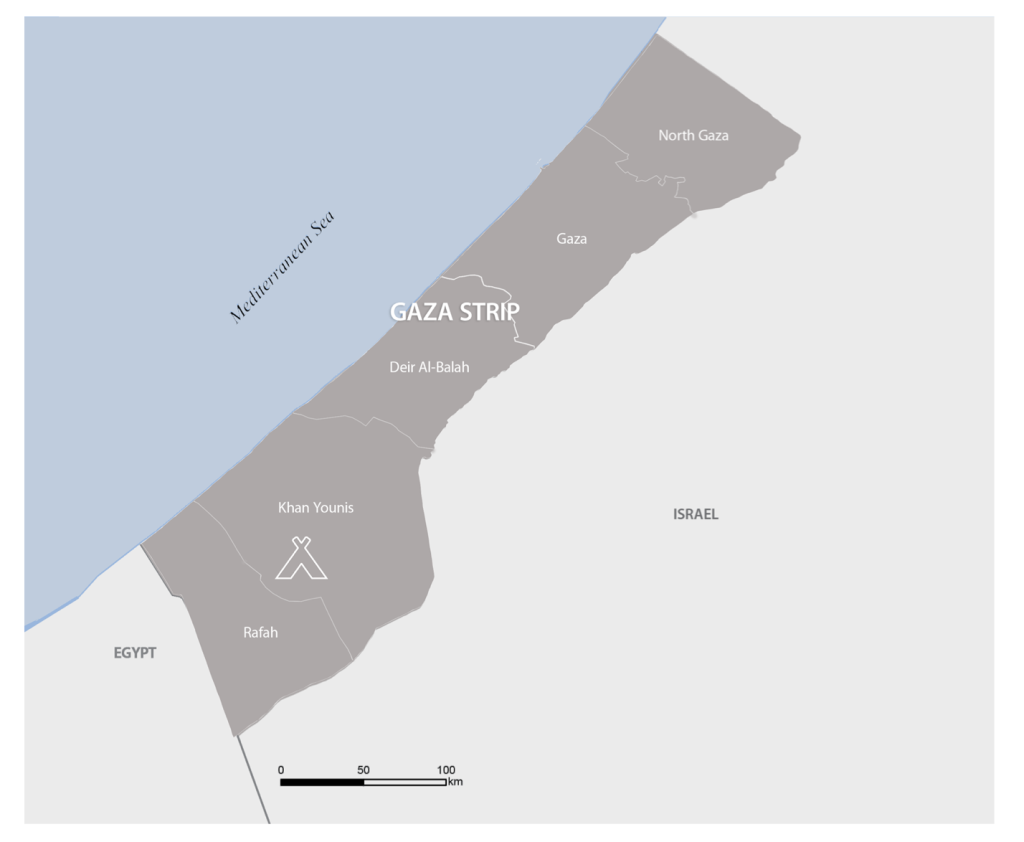Gaza Strip: Famine Review of the Integrated Food Security Phase Classification (IPC) Analysis
Executive Summary

All Global Research articles can be read in 51 languages by activating the Translate Website button below the author’s name (only available in desktop version).
To receive Global Research’s Daily Newsletter (selected articles), click here.
Click the share button above to email/forward this article to your friends and colleagues. Follow us on Instagram and Twitter and subscribe to our Telegram Channel. Feel free to repost and share widely Global Research articles.
New Year Donation Drive: Global Research Is Committed to the “Unspoken Truth”
***
The Integrated Food Security Phase Classification (IPC) Famine Review Committee (FRC) was activated on 11 December 2023, by the IPC Global Support Unit (GSU) “after acknowledging the presence of evidence above IPC Acute Food Insecurity (AFI) Phase 5 thresholds”. The FRC may be activated under four different scenarios[1] as detailed in the IPC Famine Guidance Note[2]. Its role is to assess the technical rigor and neutrality of the IPC.[3] The FRC was tasked to review the classifications that had been performed by the IPC Analysis Team.
The IPC Analysis Team chose to analyse the situation in the whole of the Gaza Strip using three units of analysis: Northern Governorates (North Gaza and Gaza), Southern Governorate (Rafah, Khan Younis, and Deir al Balah (Middle Area)) Residents, and Southern Governorate Internally Displaced Persons (IDP) (see map on page 4). The current analysis period was from 24 November 2023 to 7 December 2023, which was during and immediately after the seven-day ‘humanitarian pause’ in the escalation of conflict on and after 7 October 2023. The projection period used in the analysis was from 8 December 2023 to 7 February 2024. The key conclusions of the FRC review are summarised in table 1.
For the current period, the FRC concluded that the estimations of the population in Catastrophe (IPC Phase 5)[4] by the IPC Analysis Team, 25% in the Northern Governorates, 15% for the Southern Governorate IDPs, and 10% for the Southern Governorate Residents, are plausible.
For the projection period, the FRC concluded that the estimations of the population in Catastrophe (IPC Phase 5) by the IPC analysis team, 30% in the Northern Governorates and 25% for the Southern Governorate IDPs, are plausible. However, the FRC considers these estimates to be conservative and that the prevalence of Catastrophe (IPC Phase 5) is likely to be higher in both units of analysis.
In addition, due to the expansion of high-intensity conflict and the extremely high and growing level of displacement in the southern governorates, the FRC concluded that the entire population of the southern governorates of Rafah, Khan Younis, and Deir al Balah (Middle Area) will likely be experiencing similar catastrophic conditions regardless of their residence status, and that their situation may only be different because of their different access to aid resources and basic services. It is most likely that at least 25% of the population in the southern governorates will be experiencing Catastrophe (IPC Phase 5) levels of food insecurity. The FRC recommends a merged classification for the projection period in the southern governorates, covering the remaining residents and IDPs.
However, this merged classification is an average prevalence and there are likely differences in the prevalence of extremely severe and catastrophic acute food insecurity in different areas of the southern governorates depending on levels of access to food, safe drinking water, healthcare, and other basic services. Worse acute food insecurity is expected in the governorates of Khan Younis and especially Deir al Balah (Middle Area), where populations are isolated by active fighting and road closures and have a significantly lower access to services and humanitarian assistance.
At least one in four households (more than half a million people) in the Gaza Strip are facing catastrophic acute food insecurity conditions (IPC Phase 5 – Catastrophe), characterized by extreme food gaps and collapse of their livelihood. About 80% of the population in Gaza Strip are in Emergency (IPC Phase 4) or Catastrophe (IPC Phase 5). The entire population can be considered classified in IPC Phase 3 and above (Crisis or worse) during the projection period starting in the second week of December. Furthermore, the situation is deteriorating rapidly.
There are reports indicating deterioration of social connectedness and mutual support networks. While all areas in the Gaza Strip are badly affected, populations in the northern governorates of North Gaza and Gaza have been affected by intense conflict for the longest period and are likely to be experiencing the most severe food insecurity and to be facing a prolonged safe water, sanitation, and healthcare crisis.
Conditions are likely to continue to sharply deteriorate for as long as hostilities continue, and humanitarian access is significantly restricted. Of the 150-180 food trucks typically entering daily pre-escalation, only about 30 food trucks have entered the Gaza Strip on a daily basis since the end of the humanitarian pause on 30 November 2023. Even optimistic estimates of the potential kilocalories delivered in these shipments indicate that this level of food supply is far below the nutritional requirements of the whole population. We also note that there is an unequal distribution of trucks across the Gaza Strip, and almost no shipments have reached the northern governorates since 28 November 2023.
Considering the extreme severity of the situation, the FRC conducted a Risk of Famine[5] analysis for a six-month projection period beginning on 8 December 2023.
The FRC considers that the Risk of Famine will increase for each day that the current situation of intense conflict and restricted humanitarian access persists or worsens. The FRC reached technical consensus that there is a Risk of Famine in the projection period through May 2024, if the current situation persists or worsens.
We note that the Famine threshold for Catastrophe (IPC Phase 5) acute food insecurity has already been exceeded. Furthermore, the situation is deteriorating rapidly. The Risk of Famine analysis indicates that the Famine thresholds for both acute malnutrition and non-trauma mortality may also be breached at some point within this timeframe. There was a lack of technical consensus on whether Famine thresholds would be breached before 7 February 2024.
Given the findings of the analysis, continuous monitoring of the conflict, humanitarian access, food security, health, water, sanitation, and hygiene (WASH), nutrition, and non-trauma mortality outcomes is necessary to monitor the ongoing risk of Famine.
The FRC warns that the consequences of the ongoing catastrophic levels of acute food insecurity at the same time as the collapse of the food system, health system, WASH system, and broader social system should be viewed by decision makers as unacceptable, regardless of the determination of how fast the situation could deteriorate.
We note that populations are being isolated in areas where essential services are not being provided and humanitarian organisations cannot obtain access. Combined with the overcrowding of IDP shelters and other locations, and an extremely limited supply of water, this situation is resulting in high risk of infectious disease outbreaks in a context in which the capacity of the health system to respond has been severely degraded. This further heightens the risk of an additional increase in excess mortality.
The only way to eliminate any risk of Famine is to stop the deterioration of health, nutrition, food security, and mortality through the restoration of health and WASH services, and the provision of safe, nutritious, sufficient food to the whole population. The situation in Gaza is clearly catastrophic for all sectors and requires an extremely urgent political response, together with a full multisectoral and strategically balanced humanitarian response.
The cessation of hostilities and the restoration of humanitarian space to deliver this multi-sectoral assistance and restore services are essential first steps in eliminating any risk of Famine.
Table 1: Key Conclusions from the FRC on the Acute Food Insecurity (AFI) Classifications under Review
IPC Map of analysis units. The IPC grouped the northern governorates (North Gaza and Gaza) and the southern governotares (Deir Al-Balah, Khan Younis and Rafah). For the southern governorates, two units of analysis were considered: residents and IDPs – here represented by a tent symbol.
Click here to read the full report.
*
Note to readers: Please click the share button above. Follow us on Instagram and Twitter and subscribe to our Telegram Channel. Feel free to repost and share widely Global Research articles.
Featured image: Displaced Palestinians wait to receive free food from a volunteer-run hospice near Nasser Medical Hospital in Khan Younis, southern Gaza, on Tuesday, January 9, 2024. Bloomberg



